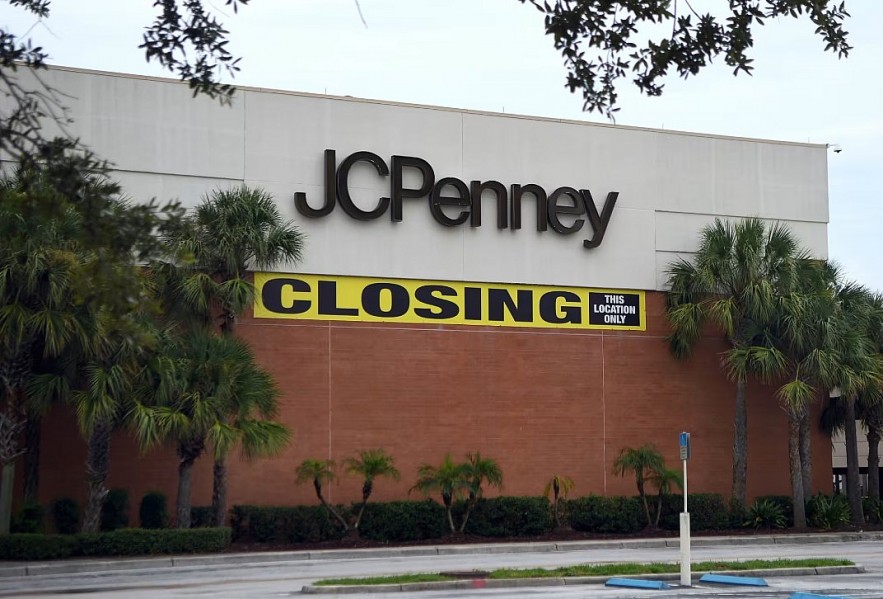JCPenney to Close Stores Across the U.S.: Full List and What's Behind the Decision
The department store chain, which has faced years of financial turbulence, confirmed that these closures will take place by mid-year, citing market conditions and lease expirations as primary factors.
Full List of JCPenney Stores Set to Close in 2025
 |
| JCPenney is closing stores nationwide |
Here are the eight confirmed locations that will shut their doors permanently:
-
The Shops at Tanforan
-
Address: 1122 El Camino Real, San Bruno, California 94066
-
-
The Shops at Northfield
-
Address: 8568 E 49th Ave., Denver, Colorado 80238
-
-
Pine Ridge Mall
-
Address: 4155 Yellowstone Ave., Chubbuck, Idaho 83202
-
-
West Ridge Mall
-
Address: 1801 SW Wanamaker Rd., Topeka, Kansas 66604
-
-
Annapolis Mall
-
Address: 1695 Annapolis Mall Rd., Annapolis, Maryland 21401
-
-
Asheville Mall
-
Address: 3 S Tunnel Rd., Asheville, North Carolina 28805
-
-
Mall at Fox Run
-
Address: 50 Fox Run Rd., Newington, New Hampshire 03801
-
-
Charleston Town CenterAddress: 3000 Charleston Town Center, Charleston, West Virginia 25389
These closures follow a broader retail trend and represent JCPenney’s efforts to streamline its store footprint and shift resources toward more profitable locations.
Why Is JCPenney Closing More Stores?
JCPenney’s leadership has framed these closures as part of a long-term strategy—not a sign of retreat, but rather of reinvention. A company spokesperson stated that the decision is based on “current retail performance metrics, customer behavior, and lease viability.”
These shutdowns are not isolated but follow a pattern that began several years ago.
From Bankruptcy to Reinvention
JCPenney filed for Chapter 11 bankruptcy protection in May 2020 after years of declining foot traffic, digital disruption, and strategic missteps. The pandemic accelerated its collapse, forcing the closure of nearly 200 stores in a sweeping restructuring effort.
Later that year, it was acquired by Simon Property Group and Brookfield Asset Management, two of the largest mall operators in the U.S. The idea was clear: stabilize JCPenney and use its large footprint to keep malls alive.
In January 2025, JCPenney merged with SPARC Group (owner of Aéropostale, Nautica, and Brooks Brothers) to form a new retail umbrella called Catalyst Brands. The new entity aims to modernize and consolidate mid-tier retail while benefiting from shared infrastructure and digital innovation.
Still, JCPenney insists that this round of closures is unrelated to the merger. “These store exits are about local conditions—not about financial distress,” one company insider said.
A Deeper Look at JCPenney's Evolution
Founded in 1902, JCPenney was once one of America’s largest retailers, known for its wide selection, in-house brands, and iconic catalog. At its peak, it operated over 1,100 stores nationwide.
But over the last two decades, it became a textbook example of retail's challenges in the digital age:
-
Failed reinventions, including a disastrous pricing strategy overhaul in 2011
-
Increased competition from Amazon, Walmart, and off-price retailers like TJ Maxx
-
A lag in adapting to e-commerce and mobile shopping
-
Over-reliance on mall traffic as U.S. malls declined
Even post-bankruptcy, JCPenney has struggled to redefine itself. While some improvements have been made—like store remodels, better online experiences, and investment in inclusive sizing—the brand still walks a tightrope between nostalgia and irrelevance.
What Happens Next for JCPenney?
Despite the closures, JCPenney still operates over 650 stores nationwide and continues to serve millions of customers both in-store and online. Its website and app have seen gradual improvements, including better inventory tracking, curbside pickup, and personalization.
The company also remains a key anchor tenant in many malls, giving it leverage with landlords and a built-in customer base.
What remains to be seen is whether JCPenney can carve out a distinct identity in a crowded marketplace. Its future may depend on how well it can balance its legacy with modern retail expectations.
For Affected Customers
Customers in affected areas are being encouraged to visit nearby JCPenney locations or shop online. The company has confirmed that liquidation sales will begin in the weeks leading up to each closure, though no specific dates have been announced yet.
What This Means for Retail Overall
JCPenney’s latest move highlights a wider trend: traditional department stores are continuing to shrink, while the future lies in flexible, data-driven, and customer-centric models. As shopping habits evolve, so too must legacy brands—whether through digital reinvention, selective closures, or strategic partnerships.
For JCPenney, this isn’t the end—it’s another chapter in a story that continues to reflect the highs and lows of American retail.
 Top 7 Biggest Shopping Malls In Europe By Number of Stores Top 7 Biggest Shopping Malls In Europe By Number of Stores All of Europe's biggest malls are worth visiting if you're a big shopper. There are hundreds of high-end brand stores to peruse. |
 How Many Stores Does Dollar General Operate in the US and Why Are They Closing Stores? How Many Stores Does Dollar General Operate in the US and Why Are They Closing Stores? Dollar General has long been a dominant force in the American retail landscape. |
 Top 10 Biggest Shopping Malls In Florida (USA) in 2025 Top 10 Biggest Shopping Malls In Florida (USA) in 2025 Did you know that some of the greatest places to shop in the US are in Florida? To find out which retail centers in Florida ... |
























